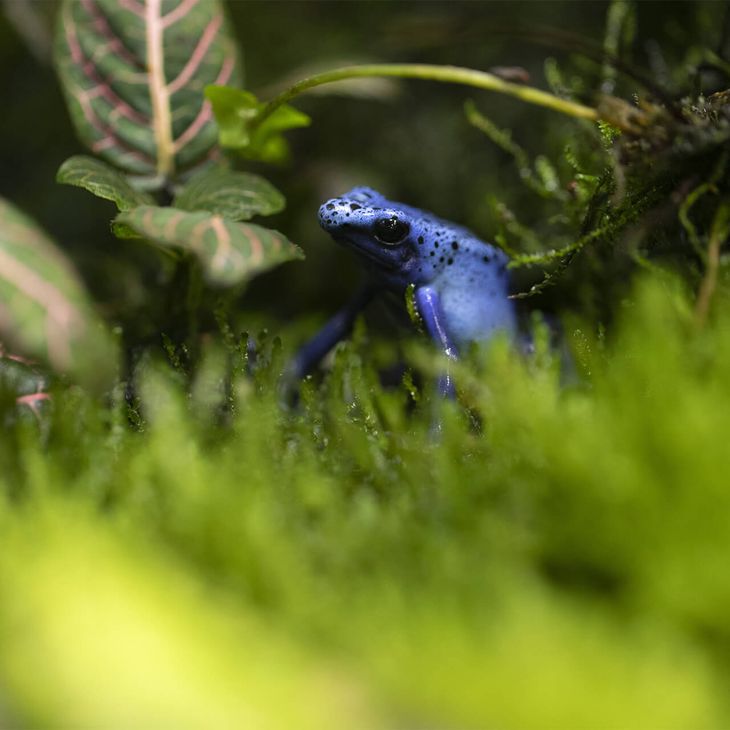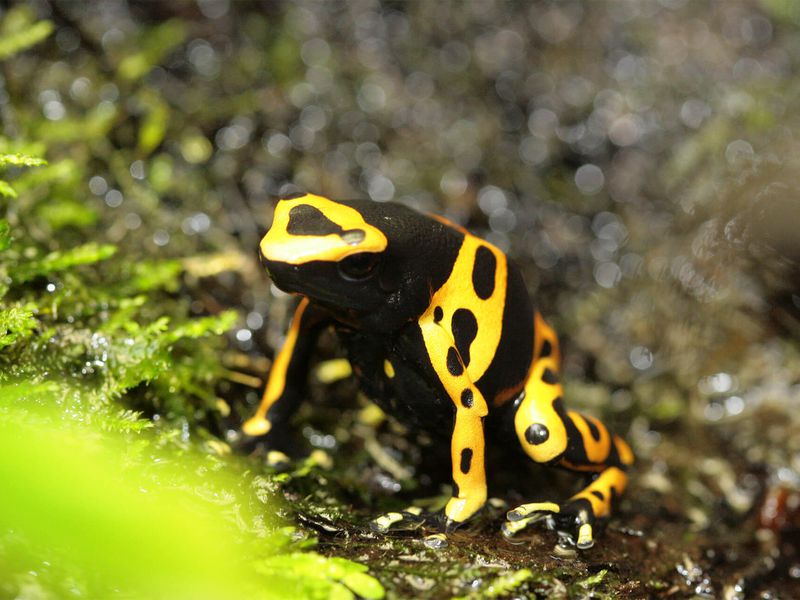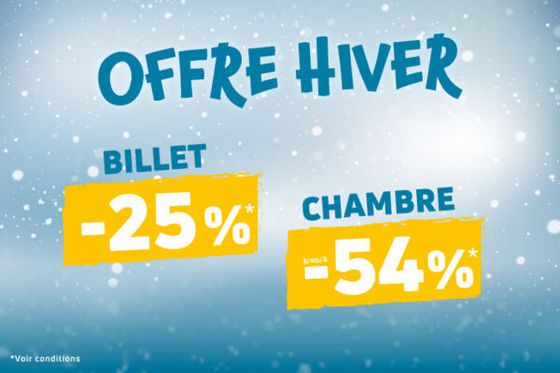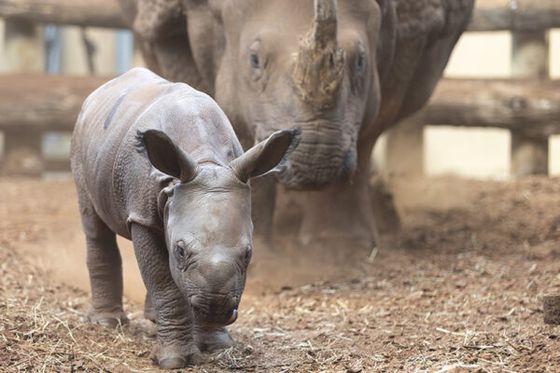« It is brightly coloured to signal to its predators that it is toxic »
A small, colourful, and poisonous frog
Don’t be fooled by its size, this little frog is highly toxic!
This poison dart frog is a small tree frog that lives in the tropical rainforests of South America. It is brightly coloured to signal to its predators that it is toxic. This visual signal is a highly effective strategy for adapting to its environment: it is called aposematism. The dyeing poison frog exhibits various different forms called “morphs”, the majority of which are predominantly yellow and black. However, the subspecies “azureus”, or blue poison dart frog, exhibits an incredible blue colouration.
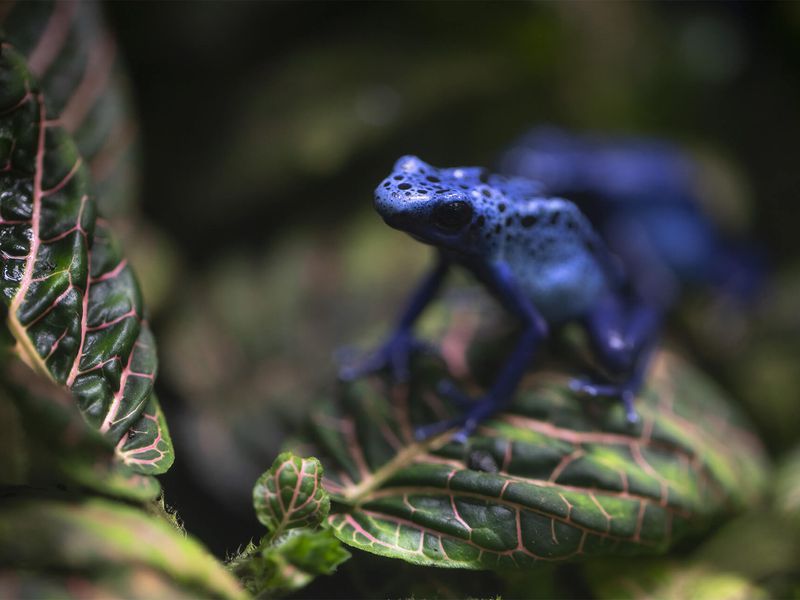
Did you know?
Bred in quarantine
Certain amphibians and reptiles are bred behind the scenes at ZooParc de Beauval. Discover poison dart frog tadpoles, the remarkable tomato frog, and the fascinating caiman lizard in this video.
Threatened amphibians
Poison dart frogs are prized by herpetologists and collectors alike for their bright colouration. Their populations are stable, and they are considered only somewhat threatened for the moment. However, some species are highly localised and therefore extremely sensitive to habitat degradation and capture for the exotic pet trade. It is therefore important to remain vigilant in order to keep poison dart frog populations in good shape.
In France, many amphibians are highly threatened with extinction. The Beauval Nature association supports amphibian populations in the Sologne, including the common spadefoot, classified as “Critically Endangered” on the International Union for Conservation of Nature (IUCN) red list.
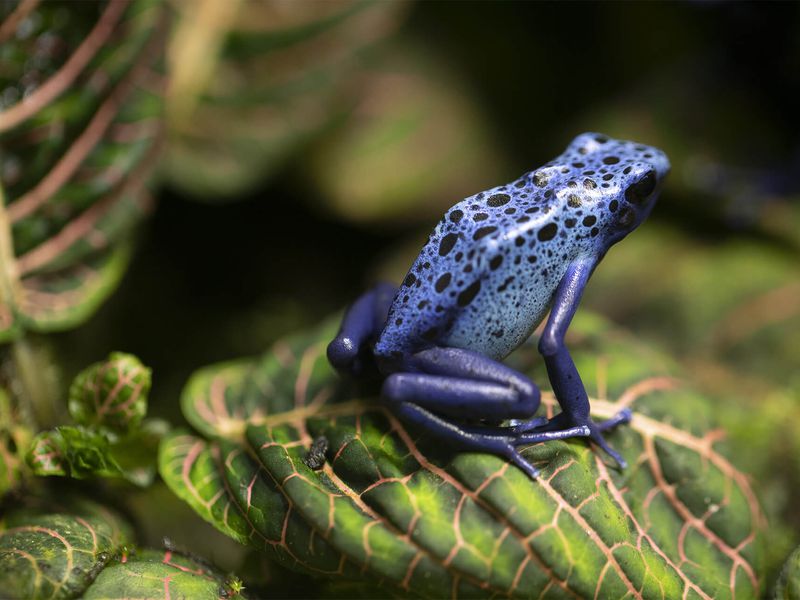
Beauval’s poison dart frogs
We house 3 species of poison dart frog:
- dendrobate auratus (the green and black poison frog)
- dendrobate leucomelas (the yellow-banded poison frog)
- dendrobate tinctorius (the dyeing poison frog )


Sponsor Beauval’s animals
Establish a strong bond with your favourite animal whilst supporting conservation programmes through the Beauval Nature association!
Least concern
Learn more about the species
-
InsectivorousDiet
-
14 to 18 daysIncubation
-
3 to 10 eggsClutch size
-
Tropical forests and WetlandsHabitat

